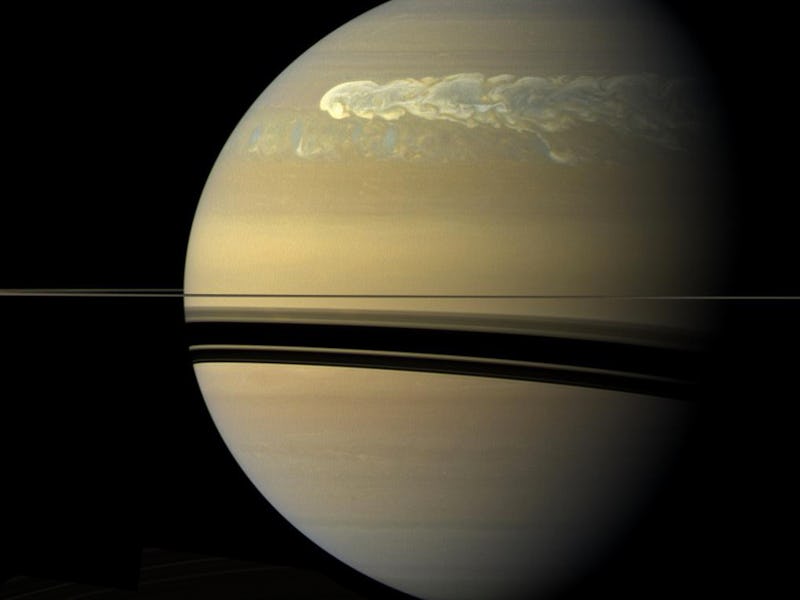Saturn at Opposition: The Stunning Celestial Event, Explained
Tomorrow night will be the best evening of the year to see Saturn's rings.

Tomorrow marks a golden opportunity for casual and dedicated stargazers alike: Not one, but two celestial bodies will be front and center.
Both the Strawberry Moon and Saturn will look a little different than usual, with the moon exhibiting a hue unique to the month of June and Saturn at its closest proximity to Earth throughout its orbit. Both can be seen with the naked eye, but a pair of binoculars or a telescope may even illuminate Saturn’s rings.
What Opposition Means
A little after midnight on the East Coast, Saturn will reach a point of opposition directly across from the sun. It will appear brighter than usual, and the tilt may allow an unprecedented view of its seven ring groups. By squinting through a pair of binoculars, an onlooker might be able to tell which star in the sky is Saturn by its slightly elongated shape alone, and a telescope will allow for a clear view of the planet’s North Polar regions.
Saturn will continue to be a prime viewing location for several months, with the best viewing time consistently being after midnight. The planet will rise in the east after sunset and set in the west at the break of dawn. And there’s no reason to get lost searching for Saturn in the sky, because it will be right next to the Strawberry Moon — close enough for photographers to catch the two in the same frame.
A strawberry moon over Los Angeles.
How to Spot the Strawberry Moon
Seeing the moon is easy enough, but tomorrow marks a special occasion: the Strawberry Moon. Named by the Algonquin tribe in the 1600s, June’s full moon signals that it’s time to harvest the fresh fruit, along with other summer produce. Better yet, if you’re a fan of casual astronomy, the moon’s proximity to Earth means that our atmosphere will give it a slight red tint as it rises and sets, and a beautiful yellow-orange, honey-colored hue at its peak.
What with Saturn being the closest and brightest it will get all year and the unique color of the Strawberry Moon in close proximity to it, tomorrow night will be a great one for photography and stargazing alike. East Coast dwellers should go outside and look up at 12:53 a.m. on June 28, Inverse previously reported peak viewing times for the rest of the US as well.